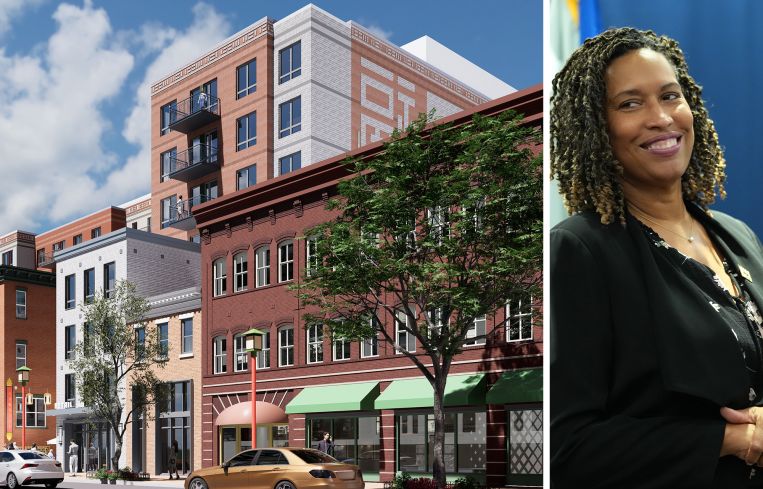D.C. Grants Tax Abatements for Two More Office-to-Resi Projects
Eight conversions totaling over 1,700 units are receiving the District’s 20-year abatements
By Nick Trombola September 5, 2025 4:31 pm
reprints
Washington, D.C., is already among the most active cities in the country for office-to-residential conversions, and now the District is putting its weight behind two more adaptive reuse projects with more tax incentives.
D.C. Mayor Muriel Bowser announced this week that two new projects spearheaded by Monumental Realty — at 608-624 Eye Street NW in Chinatown and 2401 Pennsylvania Avenue NW in D.C.’s West End — will receive 20-year tax abatements via the District’s Housing in Downtown (HID) program. The program aims to incentivize residential conversion projects as a means to achieve Bowser’s goal of adding 15,000 residents to D.C. by 2028.
Monument’s plans for the project at 608-624 Eye, dubbed the Gallery, involve redeveloping a bundle of small lots into an active retail and residential corridor. Once completed, the property will feature 116 units, 12 of which designated as affordable, and about 8,000 square feet of retail space. At 2401 Pennsylvania, meanwhile, Monument plans to convert three floors of an existing eight-story office into 60 units, with six designated as affordable. The Business Journals first reported news of the tax abatements.
A total of eight projects have now received tax abatements, currently capped at $2.5 million through FY 2026. The total program cap will increase to $41 million by FY 2028, with a 4 percent annual increase each consecutive year after that. The District expects the eight projects currently receiving the abatement to produce 1,745 new housing units. Monument was among the first developers to receive the abatement last year, with a separate 152-unit project at 613-617 H Street NW in Chinatown.
“These eight projects demonstrate how the mayor’s $41 million investment in the HID program is already paying off for District residents, businesses, and visitors in helping to create a downtown where people can live — not just commute to and from work,” Nina Albert, deputy mayor for planning and economic development, said in a statement. “And the potential for HID is growing, as budgetary changes starting this fall will allow us to consider even more potential projects for the program.”
Receiving the abatement doesn’t necessarily mean that a developer has an easy time getting their project off the ground. Post Brothers, a Philadelphia-based developer that specializes in adaptive reuse projects, also secured the abatement for its planned conversion of 1825 and 1875 Connecticut Avenue NW, the largest conversion project planned within the District at 600 units. Yet the developer has struggled to secure financing for the redevelopment and requested a two-year entitlement extension in January. The current status of that project is unclear.
Bowser, meanwhile, also announced a new conversion project from developers Stonebridge and the Bernstein Companies. The duo plan to redevelop 1990 K Street NW — soon to be rebranded as 1999 Eye Street NW — into 434 units and 17,000 square feet of retail space. Demolition for the $250 million project began earlier this week, with the first residents expected to move in by 2028, per the mayor’s office.
“We have a beautiful downtown, we have buildings that need people in them, and we have a need for more housing in our city — the HID program recognizes all of that, and it’s an important part of our Growth Agenda,” Bowser said in a statement. “With [the 1999 Eye project], we’ll bring 700 new residents to downtown, we’ll create new retail spaces, and that means a more vibrant and livable downtown.”
Washington, D.C.’s office-to-residential pipeline is one of the largest in the nation per capita, according to a recent RentCafe report, second only to New York City in terms of total number of expected units. And even though office demand and activity has resurfaced in the years since the pandemic, office availability within D.C. is still well over 23 percent, according to a recent market report by Savills.
Nick Trombola can be reached at ntrombola@commercialobserver.com.



